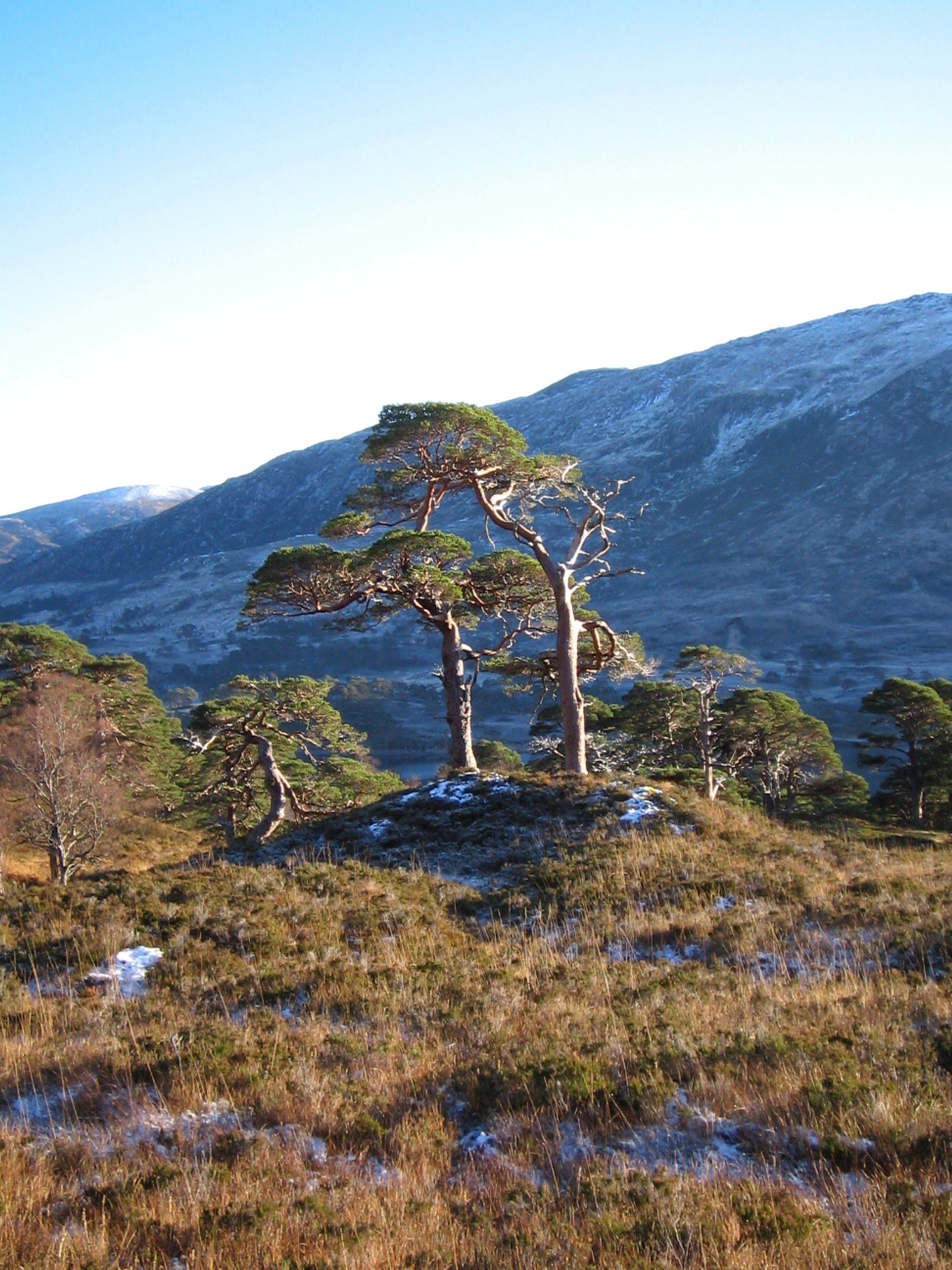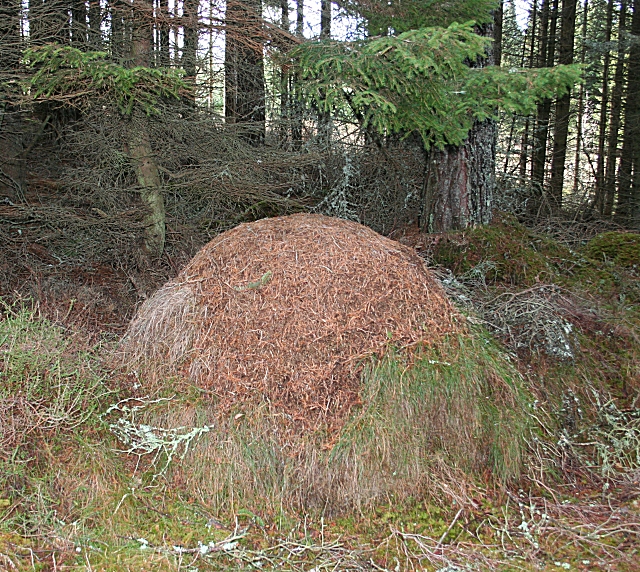The Scots pine was @SpeciesofUK from 3rd to 9th February 2013.
The UK only has three native conifers - Juniper, Yew and Scots Pine. Of these, Scots Pine is the UK's only native pine.
The UK only has three native conifers - Juniper, Yew and Scots Pine. Of these, Scots Pine is the UK's only native pine.
Scots Pine is native to
Northern Europe and Asia. It ranges from Ireland in the west to Siberia in the east
and Portugal and the Caucasus in the south. In fact, the Scots Pine is the most
widely distributed conifer in the world.[1]
 |
| Scots Pine, Glen Affric [Source: Chris] |
In the UK, the Scots Pine’s natural range is restricted to Scotland. It
is the dominant tree in the UK’s only truly native pine forest, the Caledonian
Forest in Scotland.
The Scots Pine is also
known as the Scots Fir. In Gaelic it is known as ‘Guithais.’[2]
The Caledonian Forest
The Caledonian Forest is a
truly unique part of the UK landscape. It is an ancient pine forest and the
outermost section of the great boreal forest that stretches across much of
Scandinavia and Siberia. The Scots Pines of the Stabbursdalen Forest in Norway
are north of the Arctic Circle and form the northernmost pine forest in the
world.
The UK’s Caledonian Forest
once covered 1.5 million hectares, across much of the Scottish Highlands.[3]
Today, only 1% remains. You can see a map showing the forest’s decline here.
 |
| Caledonian Forest Remnant in Glen Affric [Source: Erik Fitzpatrick] |
As well as Scots Pine, the
Caledonian Forest originally featured birch, rowan, aspen and juniper and was a
home of beavers, boars, lynx and wolves. The surviving remnants of the
Caledonian forest are often made up solely of Scots Pine, or Scots Pine and
birch.
The main surviving
remnants are Abernethy Forest, Glen Affric, Rothiemurchus Forest, and the Black
Wood of Rannoch.[4]
 |
| Rothiemurchus Forest [Source: Geoff Wong] |
Many remnants of Scots
Pine forest are undergoing regeneration or aforestation schemes. The most
ambitious is by the organisation Trees for Life, which is trying to restore a
large chunk of the Caledonian Forest back to its wild state.
Characteristics of Scots Pine
The Scots Pine is, as the
name suggests, a pine. Pines are types of evergreen conifers. There are about
115 species of pine worldwide.[5]
The Scots Pine thrives on
well drained mineral soil or sand low in nutrients, although it also grows well
in most other soil types.[6] In
the UK it grows to about 20m tall, and exceptionally it can grow larger still.
On mainland Europe, it can even reach 36m.[7]
 |
| Large Scots Pine, Scotland [Source: Lee Carson on Flickr] |
In the north of its range
the Scots Pine grows at ground level up, but in the south of its range it is a
high mountain tree, growing at 1,200-2,600m.[8] In many of the UK’s native
remnants of Caledonian Forest, Scots Pine are found to be growing on north
facing slopes. It’s not clear why this is.[9]
 |
| Scots Pine in the Scottish Highlands [Source: Peter Mulligan] |
The Scots Pine is a very hardy
tree. It lives for 250-300 years, although one specimen in Glen Loyne in Scotland was recorded at over 520 years![10]
The Scots Pine’s leaf buds
have papery-white scales. The buds are often covered by a protective
sticky-white resin.[11]
The leaves of the Scots
Pine are thick, slightly twisted, dark green-grey needles about 5cm long which
appear in pairs. The needles are longer on young trees and shorter on older
trees.[12]
They have no stalk.
| Needles and Buds [Source: H. Zell] |
The needles stay on the
tree for 2-3 years. Each autumn the older needles turn yellow before they are
shed.
Needle yellowing might sound odd for an "evergreen" tree, but actually it’s quite normal. As new needles form on branch tips, older needles aren't needed for photosynthesis.[13]
The bark of the Scots Pine is very distinctive. It is made up of orange-brown scales which become deeply fissured and prominent in older trees.
 |
| Scots Pine Bark on a Mature Tree [Source: Ramin Nakisa] |
Young Scots Pines have a
conical shape typical of conifers, but in mature trees this gives way to a
range of flat- and round-topped shapes. The varied shape of the mature Scots
Pine, with its straight, often branchless trunks, and irregular crowns, is what
gives it its strange and powerful beauty.
Scots Pine’s cones
Scots Pine, like all pine, has cones. When many people think of pine cones they think of them in their mature,
woody phase, but the life cycle of a cone is much more interesting than just
that - they start as a female flower!
Scots Pine male and female flowers occur on the same tree in May. The female flowers occupy the tips of the
highest branches and the males are clustered together below.
 |
| Male Scots Pine Flowers with Pollen [Source: Beentree] |
 |
| Female Scots Pine Flowers [Source: foxypar4 on Flickr] |
(NB: strictly speaking, conifer 'flowers' are not actually flowers at all. Botanically speaking, they are known as 'cones' even in this stage of their life-cycle. But most people do call them flowers and use the word cone only to describe the pollinated female cones which hold the seeds)
Pollination of Scots Pine is by wind, as with most conifers. Fertilised female flowers develop into cones and take two years to become fully mature. Cone production in the Scots Pine is very variable. In a good year a mature tree can produce 3,000 cones; in a bad year, few or none at all.[14][15]
They ripen in
April, open while still on the tree, and release up to 25 tiny winged seeds which
are dispersed by the wind.
 |
| One Year Old Scots Pine Cone [Source: Pleple2000] |
 |
| Fully Mature Scots Pine Cones [Source: John Haslam] |
The Scots Pine seeds generally are dispersed to no more than 50-100m away from their parent tree.[16] Scots Pine is notable for being completely unable to generate under its own canopy. The seeds will only be successful if they are blown into a clearing.
 |
| Scots Pine Seeds [Source: Beentree] |
Scots Pine and Other Species
Like most trees, Scots Pine has an important symbiotic relationship with fungi. The hyphae, or threadlike filaments, of fungi grow around the tree’s roots. They take carbohydrates and sugars from the tree and in return supply nutrients and minerals.[17]
The shade provided by Scots Pine provides a good habitat for blaeberries and cowberries, which can form dense carpets on the forest floor. Over time, the floor of a Scots Pine forest becomes “hummocky,” as low lying plants grow over old tree stumps and create a living mass of vegetation.
 |
| Blaeberries [Source: Lis Burke] |
Insects like the deep fissures in Scots Pine bark. Birds such as treecreepers specialise in winkling them out. Crested tits eat invertebrates and also pine seeds.[18]
 |
| Crested Tit [Source: Luc Viatour / www.Lucnix.be] |
Wood ants feed on caterpillars eating pine needles and wood ant colonies of forest detritus are characteristic of pine forests.
 |
| Wood Ant Nest [Source: Anne Burgess] |
Black grouse and capercaillie are both associated closely with Scots Pine forests. They eat the buds and shoots of the pine.
 |
| Capercaillie [Source: Tõnu Pani] |
Mammals associated with
Scots Pine woods include the red squirrel, the pine marten, red deer and even
the wildcat.[19]
 |
| Red Squirrel [Source: Tony Hisgett] |
Perhaps most wonderfully
of all, Scots Pine forests are home to the Scottish Crossbill, a truly unique
species which is found in Scotland and nowhere else in the world. It numbers
about 2,000 individuals.[20]
 |
| Scottish Crossbill [Source: welcometoscotland.com] |
Human Uses
Scots Pine timber is one of the strongest softwoods. It is widely used in construction and joinery. Examples of Scots Pine timber products include telegraph poles, posts and fences.[21]
Scots Pine can be tapped for its resin. This can be used to make turpentine, although other pine species are more commonly used for this.[22] Resin is a secretion made by many different plants and abundantly by coniferous trees and has been used by humans for thousands of year.
The resin in
Scots Pine acts like a natural preservative. Dead trees can stand for 100 years
because the resin slows the process of decay.[23]
 |
| Dead Scots Pine [Source: Julia Ballarin] |
Other products that have been made from Scots pines include rope for the inner bark, tar from the roots and dye from the cones.[24]
Strange but true…
Scots Pines are usually tall, erect trees. However, on boggy ground, or on high, exposed sites, they are sometimes seen alone, gnarled, stunted and bonsai-like, even if they are very old.
| Stunted Scots Pine [Source: Eaglestein] |
Hi!
ReplyDeleteSpecies of UK, you did really brilliant job. I just read this post and got it is so impressive and useful post.
Keep it up!
conifer tree seeds
Thank you! I'm doing research on Scots Pine for a novel and found your info about the other habitat residents who use Scots Pine very helpful! Nice series.
ReplyDelete